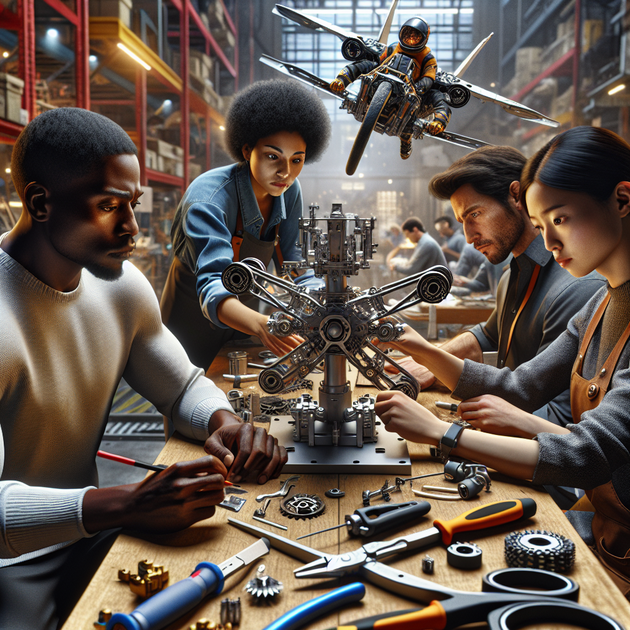Have you ever wondered if rocket science could involve something as down-to-earth as a mountain bike? Well, it turns out that the first test version of SpaceX’s Dragon 2 docking prototype was built using actual mountain bike parts. Yes—parts you’d find at your local bike shop helped shape a spacecraft that would eventually dock with the International Space Station. Let’s dig into how this happened, why it worked, and what it says about creative engineering.
Why Build a Docking Prototype with Mountain Bike Parts?
When you think of spacecraft engineering, visions of sterile labs and custom-machined metal probably come to mind—not handlebars and disc brakes. But in the early days of developing the Dragon 2 docking system, SpaceX needed a quick way to prove their ideas before committing time and money to expensive hardware.
The challenge? Designing a mechanism that would safely connect and seal two spacecraft together in orbit—a process that demands both precision and reliability. Traditional aerospace parts are costly and slow to manufacture. So the team asked themselves: what do we have on hand that can simulate springs, dampers, pivots, and force feedback? The answer was sitting right there in their garages.
How Mountain Bike Parts Fit into the Design
It might sound odd at first, but think about what makes up a modern mountain bike:
- Suspension forks for absorbing impacts (shock absorbers)
- Disc brakes for controlled movement (rotational resistance)
- Ball bearings and axles for smooth rotation
- Handlebar assemblies for pivoting motion
- Adjustable springs for tension control
All these features are exactly what you need when simulating the sort of mechanical motion seen in spacecraft docking systems. Rather than waiting months for custom components or spending thousands on prototypes, engineers at SpaceX grabbed off-the-shelf mountain bike hardware to build their initial test rig. The result was a full-scale mock-up that could actually demonstrate how their new soft-capture system would work under real-world forces.
An Inside Look at SpaceX’s Engineering Culture
Here’s where things get really interesting—not just from an engineering perspective but from a cultural one too. Elon Musk has always encouraged his teams to move fast and break things (hopefully not literally in this case). This “fail fast” attitude is about learning quickly by building simple versions of complex systems to see what works and what doesn’t.
Anecdote time: According to engineers who worked on early prototypes (and shared stories on forums like Reddit), it wasn’t unusual to see half-finished models made from whatever was lying around—bike shocks here, plumbing valves there. One engineer recalled watching a senior designer roll up on his own bicycle one day… only to see him unscrew his suspension fork and attach it directly to the test rig! That hands-on approach saved weeks of design time.
This kind of bootstrapping isn’t just about saving money—it’s about keeping momentum. By relying on reliable mountain bike components already designed to handle heavy loads and repeated use, they were able to rapidly iterate without getting bogged down by paperwork or procurement delays.
The Impact on Modern Spacecraft Design
The success of that scrappy Dragon 2 docking prototype wasn’t just a fun side note—it actually shaped how other hardware was developed later on. Once they’d proven their core concepts using accessible materials like mountain bike parts, they could justify investing in custom aerospace-grade assemblies for flight models.
Here’s why this matters:
- Speed: Quick prototypes help catch design flaws early.
- Savings: Using affordable parts keeps costs down during R&D.
- Flexibility: Easy swaps encourage experimentation.
- Reliability Testing: If it works with rough-and-tumble bike shocks, it’ll probably stand up in space.
SpaceX’s willingness to borrow from unexpected industries is part of why they’ve been able to outpace traditional aerospace companies—and why NASA has trusted them with so many missions since.
What Can We Learn from This?
If there’s one takeaway from the story of the Dragon 2 docking prototype made out of mountain bike parts, it’s this: sometimes innovation comes from looking outside your own industry for solutions. You don’t always need cutting-edge tech—just creativity and some practical problem-solving skills.
So next time you see someone tinkering in their garage or piecing together something weird from spare parts… remember that they might be onto something big!
What other surprising crossovers between everyday gear and advanced technology have you heard about? Share your favorite examples below!

Leave a Reply